Abstract 12/2020
Table of content
Wojciech Suchorzewski, Andrzej Brzeziński, Andrzej Waltz – Traffic modelling and forecasting – from abacus to Big Data
Bryniarska Zofia, Jarosiński Krzysztof – Functioning of the Wavelo city bike rental in Krakow between 2017-2019
Michał Małysz – Multimodal interchanges in the Wrocław city space
Maciej Mikulski – Trams’ travel time depending on their separation from general traffic on the example of Grzegórzecka Street in Kraków
Abstracts
Wojciech Suchorzewski, Andrzej Brzeziński, Andrzej Waltz
Traffic modelling and forecasting – from abacus to Big Data
Abstract: The article describes the history of modelling and forecasting traffic in Poland. At the end of the 1950’s the first traffic forecasts were developed with the use of gravity model and domestic production computers (ZAM1 and ZAM2). In the 1960s, models and traffic forecasts were used not only in transport system planning but also in urban development. An example is the Warsaw optimization method used in Polish and foreign cities. In the 1970s, American UTPS programs for IBM360/370 and RIAD32 computers were accessed and used in many Polish cities. Reliability of traffic models and forecasts has been enriched by research on traffic behavior. In 1996, as part of the “Study of the layout of motorways and expressways”, the first traffic model was built on the road network. This model was updated in subsequent studies on the development of national roads. In 2007-2008, as part of the work on the “Master Plan for Rail Transport in Poland by 2030”, a national model of railway traffic was developed. In 2012, during the “Modelling” conference, the concept of combining the road and rail models into one common traffic forecasting system at the national level was presented. Within the framework of the project “Principles of traffic forecasting taking into account other modes of transport – INMOP 3”, carried out in 2016-2019, the national multimodal road-rail transport model was created. In recent years, advanced traffic data acquisition methods using “BIG DATA” are used to collect traffic data and to build traffic models. The article does not discuss the work on pedestrian and bicycle traffic models, but lists the publications of recent years in the catalogue of literature.
Key words: traffic modelling, railway traffic modelling, traffic forecasting, traffic research, BIG DATA
Bryniarska Zofia, Jarosiński Krzysztof
Functioning of the Wavelo city bike rental in Krakow between 2017-2019
Abstract: The importance of the bicycle as a means of mobility, especially in urban areas, is growing. Difficult times of pandemics and the need to maintain social distance show even more strongly that the bicycle makes it easy not only to travel distances, but also to maintain one’s own health and fitness. It does not always have to be own bicycle. In many situations such a function is effectively performed by a bicycle rented in a city rental. The aim of the article is to analyze the functioning of Wavelo city bike rental in Krakow in 2017-2019 and to present the assessment of the level of preferences and satisfaction of the users of this system obtained during the marketing survey. The article describes the history of the city bicycle in Poland and in Krakow, lists the pros and cons of the system. On the basis of the data from the marketing research, the users of Wavelo city bicycle rental have been presented and the evaluation of the system’s operation and selected features seen through the eyes of its users has been presented. The respondents also chose the preferences of particular features of the system. On the basis of the data from the Wavelo system, information about the number of rentals and the efficiency of the bikes in the following years of the rental company’s operation was presented. All analyses have been compared with the results of similar research conducted in 2017, i.e. one year after the system was launched by the BikeU operator. Unfortunately, since the beginning of 2020, residents of Krakow can no longer use the rental system, because it has closed its operation.
Key words: mobility, city bike, city bike rental, preferences and satisfaction of city bike users
Michał Małysz
Multimodal interchanges in the Wrocław city space
Abstract: Multimodal passenger transport may, in the future, be an effective way of traveling. In the Polish space, there are visible investments in the construction of multimodal interchanges in many cities which enable comfortable change between various means of transport. This type of transport organization can be tested not only on a macroscale in interregional transport, for example on the way to seaside and mountain resorts, but also on |a local scale, for example a change from a train to urban transport. The aim of this article is to identify multimodal interchanges in Wrocław, to determine their location, the degree of multimodality and spatial dependencies between them, which will allow to identify effective nodes and those which require improvement. The methods include, first of all, observations, network analyzes and spatial analyzes based on spatial autocorrelation. The results of the research are both the characteristics of the most important interchange and maps showing their capacity as far as travelling around Wrocław is concerned. As multimodal nodes, the author classified groups of stops enabling a change between air, rail, bus, tram and bicycle transport as well as regional and long-distance buses and changing private car to another way of transport. In the final part of the article proposed investments were presented to improve the functioning of multimodal interchanges in Wrocław, taking into account the expected investments in the development of public transport.
Key words: passenger multimodal transport, multimodal interchange, interchange, urban transport
Maciej Mikulski
Trams’ travel time depending on their separation from general traffic on the example of Grzegórzecka Street in Kraków
Abstract: The article discusses the impact of changes in traffic organization on the trams’ travel time. The case study was Grzegórzecka Street in Kraków, where a new traffic organization was introduced in the first half of June 2020, consisting of the elimination of one general traffic lane and allowing only bicycles on it. Therefore, general traffic was introduced to the tram track, which had been previously physically separated. The article presents computer measurements of the travel time of this section by tram lines number 1, 19 and 22 before and after the reorganization. A significance test was performed for each line with a null hypothesis that the average trams travel times before and after the changes are equal. At the significance level of 0.05, in two cases, it was found that travel times after changes in the traffic organization on Grzegórzecka Street are lower, and in one case there is no basis for rejecting the hypothesis of equal travel times in both periods. The basic conclusion is that the travel time of trams after admitting general traffic to the tram track has not increased.
Key words: tram transport, trams, traffic organization

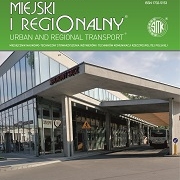 SITK
SITK 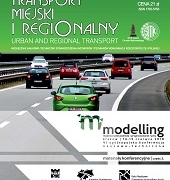
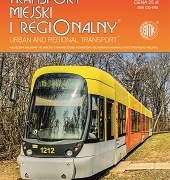
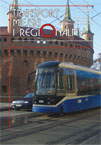 SITK RP
SITK RP 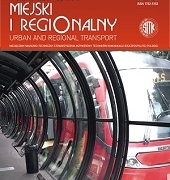
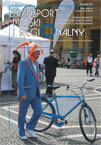 SITK RP
SITK RP 

